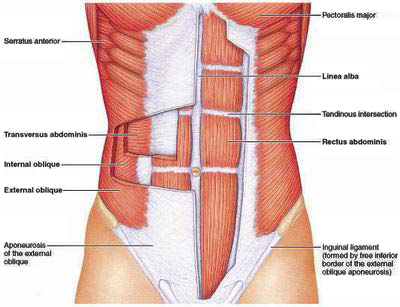- Like
- SHARE
- Digg
- Del
- Tumblr
- VKontakte
- Flattr
- Buffer
- Love This
- Save
- Odnoklassniki
- Meneame
- Blogger
- Amazon
- Yahoo Mail
- Gmail
- AOL
- Newsvine
- HackerNews
- Evernote
- MySpace
- Mail.ru
- Viadeo
- Line
- Comments
- Yummly
- SMS
- Viber
- Telegram
- JOIN
- Skype
- Facebook Messenger
- Kakao
- LiveJournal
- Yammer
- Edgar
- Fintel
- Mix
- Instapaper
- Copy Link
 Correct Diastasis Recti and Mommy Belly with Core Exercises
Correct Diastasis Recti and Mommy Belly with Core Exercises
Many new moms get fed up with their post-natal fitness plan. In spite of the best intentions, lots of hard work, and endless abdominal workouts, the stubborn belly bulge won’t budge. The underlying cause may be a common condition that no amount of crunches can fix: diastasis recti. Some estimate that up to 1 in 3 moms experience some degree of diastasis recti.
The good news: many moms can beat the belly bulge with the right exercise plan! Although there are many different treatments and philosophies for correcting diastasis recti, carefully selected core exercises have been shown to be very helpful for many women. Keep reading to find out exactly what diastasis recti is, why it’s a problem, an easy self-test for diastasis recti, the right kinds of core exercises to do to correct diastasis recti, and tips for banishing the bulge once and for all.
NOTE: If your diastasis recti is severe, or if you have had a C-section, don’t rely on the internet; SEE YOUR DOCTOR before beginning any kind of exercise program!
What is Diastasis Recti?
Diastasis recti is a condition in which the connective tissue between the rectus abdominis (AKA the “six-pack” muscle) becomes stretched out and is no longer able to hold the muscles in place. The normal level of intra-abdominal pressure is decreased due to the laxity of the connective tissue between the muscles, and the contents of the abdomen are pushed outward rather than being tucked neatly behind the abdominal muscles. As a result, the tummy pooches out instead of remaining as flat and tight as it was before childbirth.
Diastasis recti can affect anyone, but it’s most common in moms due to the stretching of the abdomen by the growing baby. It’s especially common in moms with more than one child because of repeated stretching. In many women, it will resolve on its own within a few weeks or months, but it’s not uncommon for it to linger, causing aesthetic and functional concerns as time goes on.
Why is Diastasis Recti a Problem?
For some women, the belly bulge caused by diastasis recti may be primarily a cosmetic concern, but the larger issue at play is that the core musculature is now compromised. Since the core musculature forms the body’s essential support system for the spine and hip complex, a weakened core is an accident waiting to happen.
A compromised core can lead to a host of injuries, the first of which is often low back pain. When your core isn’t able to do its job of providing firm yet flexible support to the lumbar spine and hip complex, the back is at risk for sprains, strains, disc injuries, and more. The core also transfers force between the upper and lower extremities. When force isn’t transferred properly, injuries further down the line can result in the shoulders, knees, and more.
Self-Check for Diastasis Recti
Lay flat on your back with your knees bent and your feet flat on the floor. Place two downward-pointing fingers on your abdomen right above your navel. As you lift your head while keeping your shoulders grounded, press down with your fingers, feeling for a gap between the abdominal muscles. A normal-size gap is about two finger-widths. If the valley is wider than two fingers, you likely have diastasis recti. If the gap between the muscles is wide, SEE YOUR DOCTOR. Medical interventions such as surgery should be a last resort, but it’s a good idea to get it checked out!
To Crunch, or Not to Crunch: Exercise Selection for Fixing Diastasis Recti

Most people default to crunches and sit ups when attempting to work the abdominal muscles. If you have read my other core training articles, you will know that I’m not the biggest fan of crunches and sit ups in general, but crunch-type exercises are especially UNHELPFUL for women with diastasis recti. The reason is that the muscles get bunched up and pushed outward when they contract in that way, making the problem WORSE!
A much better course of action is to focus on core stability exercises that draw the abdominals inward instead of pushing them outward. That way, normal intra-abdominal pressure can be restored as the muscles tone and tighten and the connective tissue in between the abdominal muscles is allowed to mend itself rather than being stretched outward again and again.
The best exercises for diastasis recti focus on deep core muscle engagement: specifically, the transversus abdominis (TVA). The TVA is the deepest abdominal muscle, and when it becomes strong and toned, it helps pull the entire abdomen inward, allowing the connective tissue to be repaired.
Six Recommended Exercises for Diastasis Recti
Here are some basic non-crunching abdominal exercises to get you started fixing diastasis recti. When in doubt, consult your doctor before proceeding!
1. Abdominal Draw-In
From a seated or lying position, experiment with drawing your abdominal muscles inward. Picture a string attaching the inside of your bellybutton to your spine. Pull the string to draw your bellybutton in toward the spine. This is different from “sucking it in” in that you will still be able to breathe, although the breaths will be more in your chest and ribcage rather than your belly. Hold this contraction for up to 30 seconds, counting out loud while you do so to ensure that you’re not accidentally holding your breath. Rest and perform another 30 second hold.
2. Abdominal Deep Pulses
Draw your abdominals in as described above, but just partway. Then pull them in even tighter for short 2-second holds. Work up to 100 repetitions of these strong 2-second holds.
3. Bridge
Lying on your back, bring your knees up to a bent position. Keep your feet, head, and shoulders flat on the floor as you lift your hips upward until you create a straight line from your knees down to your shoulders. Squeeze your glutes together and draw in your abdominals as described in the Abdominal Draw-In exercise. Ideally, your ankles will be aligned directly below your knees. Imagine you are holding an object the size of a grapefruit between your knees. Don’t drop the grapefruit, and don’t squeeze the juice out of it; just hold it! Maintain the bridge posture for up to 60 seconds. Break up the hold as needed, for example, three 20 second holds or two 30 second holds. Work up to bridging for 60 uninterrupted seconds as time goes on. Rest before performing another repetition.
4. Plank
The plank is kind of like the reverse of the bridge. Get into position as if you’re about to do a push-up, but place your forearms on the ground. The only points of contact between your body and the ground are your feet and your forearms. Alignment is key: create a straight line from the top of your head all the way down to your ankles. Maintain drawn-in abs at all times to keep your belly from sagging downward. Squeeze your glutes to get your hips into alignment: don’t let them lift upward or sag downward. Stay strong in your shoulders and in your shins and ankles. The plank is truly a full-body exercise! Work up to an uninterrupted 60-second hold, but feel free to break the hold up as needed. Rest, then repeat. If the full-on plank is too challenging, place your knees on the ground and plank by creating a straight line from your head to your knees.
5. Wall Sit With Ball Squeeze
Stand with your back and hips against a wall. Place a squishy Pilates ball or a firm pillow between your knees. Sink down into a sitting position until your knees form a 90 degree angle. Keep your abs drawn in strongly the entire time, as described in the Abdominal Draw-In exercise above. Squeeze the ball/pillow firmly for 20 pulses while maintaining drawn-in abs. Return to standing and rest before performing another set.
6. Pelvic Floor Exercises
Strengthening the pelvic floor muscles is very helpful for restoring normal intraabdominal pressure, as well as toning up the vaginal walls. This will improve sensation during sex as well as prevent and relieve urinary incontinence. Visit the link above for an entire article on the benefits of pelvic floor exercises for women, as well as how to perform them correctly.
More Tips for Banishing the Mommy Belly Bulge
When fixing diastasis recti, avoid any exercises or movements that force the abdominals outward. Move with extra mindfulness at all times to avoid overstretching your abdominals. When you need to cough, hold your hands firmly over your belly to give yourself some extra support.
Steer clear of the following movements:
- All types of crunches (as described above)
- Back-arching movements such as back bends in yoga or pilates
- Heavy lifting
- Any movements where you roll and twist at the same time, as many people do when they get out of bed or up off the floor. Instead, roll onto your side and push yourself up gently.
What if My Mommy Belly Bulge is Caused by Extra Abdominal Fat?
Fixing diastasis recti can only go so far in beating the belly bulge so common in post-natal women. Keep in mind that if you have extra belly fat causing your belly to appear bulgy, a full-body fat loss program also needs to take priority. No amount of abdominal exercises directly burn fat from that area, although they can help to draw the tummy inward and improve posture, contributing to a slimming effect.
Burning fat, abdominal or otherwise, is best addressed through a balanced fitness program: cardio exercise alongside strength and core training, and a careful nutrition plan that ensures you are getting the nutrients you need to stay strong and healthy while still creating the calorie deficit necessary to lose the extra weight.
Final Thoughts
I hope this article has given you a good starting point for fixing diastasis recti. For an awesome discussion with an expert on this subject, check out the videos featured on this page.
See Also:
- How to Slim and Strengthen Your Midsection With Core Exercises
- How to Correct Common Postural Distortions Caused by Muscle Imbalances
About Mae Barraclough
Mae Barraclough, B.S., NASM-CPT, NASM-CES is a certified personal trainer, corrective exercise specialist, and licensed Zumba Instructor. With her passion for health, fitness, and dance, Mae loves learning all she can and sharing her knowledge with others.

